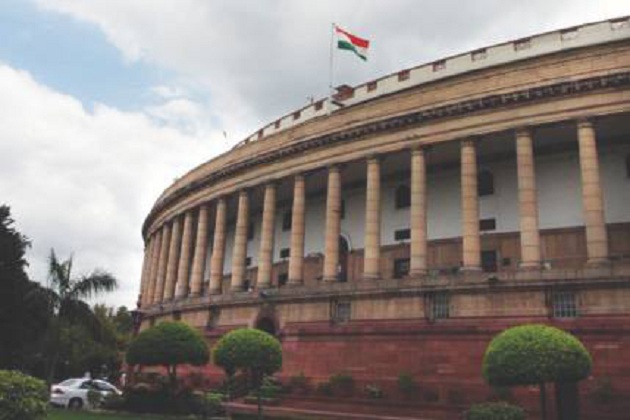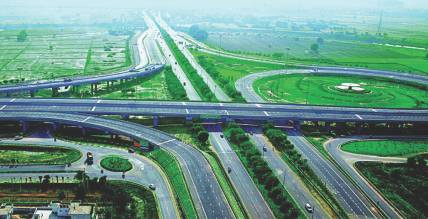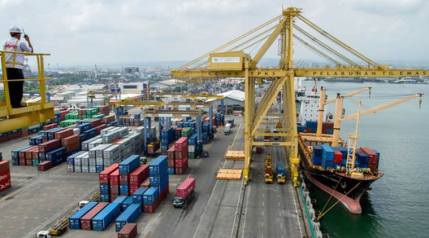Ease of Doing Business:
Since 2014, the Government of India launched a rigorous program of regulatory reforms aimed at making it easier to do business in India. The efforts have yielded substantial results with India jumping 4 places on the World Banks’ Doing Business rankings. In starting a business, India’s ranking has improved from 164 in 2015 to 155 in 2016. This improvement has been mainly on account of decrease in number of procedures and time taken to start a business in India. In power availability, India’s ranking has come up from 99 in 2015 to 70 in 2016. India fairs particularly well in terms of ‘Protecting interests of Minority Investors’, where it ranks 8 among the 189 countries which are part of this index. With the rest parameters like dealing with construction permits, property registration, Credit facility, tax payment, cross-border trading, enforcing contracts and resolving insolvency, India has ascended from Rank 134 in 2015, to 130 in 2017 in EODB index with a more conducive environment for starting a business.
National Manufacturing Policy:
With a goal to increase in manufacturing sector growth to 12-14% per annum over the medium term and to increase in the share of manufacturing in the country’s Gross Domestic Product from 16% to 25% by 2022, the National Manufacturing policy envisions to enhance the global competitiveness of the Indian manufacturing sector and ensuring sustainability of growth, particularly with regard to environment. Special focus has been targeted on industries with strategic significance like aerospace, shipping, IT hardware & electronics, telecommunication equipment, defence equipment and solar energy and industries where India enjoys a competitive advantage such as automobiles, pharmaceuticals and medical equipment.
National Investment & Manufacturing Zones (NIMZ):
 The National Investment and Manufacturing Zones are being conceived as giant industrial greenfield townships to promote world-class manufacturing activities where the minimum size is 5000 hectares (50 square kilometres) wherein the processing area has to be at least 30%. This comes under the periphery of the Manufacturing Policy and under this scheme, and both state and the central government will be responsible various management aspects of the Zones, with the sheer objective of the promotion of domestic and global investments.
The National Investment and Manufacturing Zones are being conceived as giant industrial greenfield townships to promote world-class manufacturing activities where the minimum size is 5000 hectares (50 square kilometres) wherein the processing area has to be at least 30%. This comes under the periphery of the Manufacturing Policy and under this scheme, and both state and the central government will be responsible various management aspects of the Zones, with the sheer objective of the promotion of domestic and global investments.
More Reforms
- Online portals for Employees State Insurance Corporation (ESIC) and Employees Provident Fund Organization (EPFO) for: Real-time registration; Payments through 56 accredited banks; Online application process for environmental and forest clearances.
- Department of Commerce, Government of India has launched Indian Trade Portal. Important feature of this portal is to be a single point for relevant information on measures other than tariff called the non-tariff measures like standards, technical regulations, conformity assessment procedures, sanitary and Phytosanitary measures which may affect trade adversely.
- An Investor Facilitation Cell has been created in ‘Invest India’ to guide, assist and handhold investors during the entire life-cycle of the business.
- The Department of Industrial Policy and Promotion has also set up Japan Plus and Korea Plus. They are special management teams to facilitate and fast track investment proposals from Japan and South Korea respectively.
Infrastructure in India:
Infrastructure is integral to the growth of any industry. The government intends to develop industrial corridors and build smart cities with state-of-the-art technology and high-speed communication. Along with the development of infrastructure, the training for the skilled workforce for the sectors is also being addressed.
Land Policy Reform Policy:
The BJP-led NDA government has introduced reforms in the land acquisition procedures, in December 2014. With a thrust on Make-in-India and infrastructure development, the government made necessary amendments. Industrial corridors requirements have been highlighted in the Bill to promote the Make-in-India initiative which seeks to provide boost to domestic manufacturing.
The amendments will make it easier to acquire land for select projects and expedite pending infrastructure projects. These changes have moderated some of the restrictive provisions in the original law of 2013 and will be very helpful in promoting business as the new Bill would reduce the cost of the acquisition of land for industry that was as high as 40% of the total cost.
Road Reforms:
 The new Road Transport and Safety Bill 2014 presents a radical change from merely regulating the movement of motorised vehicles, to actually safeguarding the interests of all road users and the economy at large. The bill proposes streamlining of various processes and regulatory frameworks, which would help in reducing inflation and giving a huge boost to the Indian manufacturing industry – furthering the government’s ‘Make in India’ vision.
The new Road Transport and Safety Bill 2014 presents a radical change from merely regulating the movement of motorised vehicles, to actually safeguarding the interests of all road users and the economy at large. The bill proposes streamlining of various processes and regulatory frameworks, which would help in reducing inflation and giving a huge boost to the Indian manufacturing industry – furthering the government’s ‘Make in India’ vision.
The Ministry of Road Transport and Highways plans to build five more Greenfield expressways across the country, which are expected to reduce travel time and propel economic growth. Nitin Gadkari, Minister of Road Transport and Highways, and Shipping has said that the government has accelerated the construction of highways and expects the revival of investments in infrastructure sector to contribute more than 2 percentage points to the country’s Gross Domestic Product (GDP) in the next two years and to create five million jobs.
Port and Shipping in India:
The Indian maritime industry is an integral part of the country’s trade and commerce. It supports 90% of India’s trade by volume. India has a coastline of 7,517 kms with potentially navigable waterways of 14,500 kms. 12 major and 200 non- major ports are dotted along the coast.
 A host of policy and regulatory reforms by the Government, in the last two years has resulted in capacity building and service delivery improvement. Additional capacity of 94 million tonnes has been added to Major Ports in FY 2015- 16, which has been the highest ever capacity addition. 56 New Projects worth INR 25000 crores have been awarded during the last two years, which will create an additional port capacity of 317 million tonnes per annum. 100 per cent Foreign Direct Investment (FDI) is also allowed under the automatic route for port and harbour construction and maintenance projects.
A host of policy and regulatory reforms by the Government, in the last two years has resulted in capacity building and service delivery improvement. Additional capacity of 94 million tonnes has been added to Major Ports in FY 2015- 16, which has been the highest ever capacity addition. 56 New Projects worth INR 25000 crores have been awarded during the last two years, which will create an additional port capacity of 317 million tonnes per annum. 100 per cent Foreign Direct Investment (FDI) is also allowed under the automatic route for port and harbour construction and maintenance projects.
Green channel for coastal cargo has been established at major ports of Kolkata, Visakhapatnam, V.O. Chidambaranar, Cochin, New Mangalore, Mumbai and Kandla. This includes earmarked exclusive berths, storage areas and gates for coastal cargo outside the custom bonded area of the ports in order to facilitate swift movement of coastal cargo.
India a Power Surplus Country:
With a production of 1108 TW, India is the world’s fifth largest producer and consumer of electricity with a total demand of 1905 TW expected by 2022. The power sector accounts for almost a quarter of the projected investments amongst all the infrastructure sectors between 2012-17. 100% Foreign Direct Investment (FDI) is allowed under the automatic route in the power sector for Generation from all sources (except atomic energy), transmission and distribution of electric energy and Power Trading, subject to all the applicable regulations and laws.
Government ensures availability of electricity to consumers at reasonable and competitive rates and to facilitate supply of adequate and uninterrupted power to all categories of consumers; and to evolve a dynamic and robust electricity infrastructure for better consumer services;
Japan Investing in India
In a survey done in 2013, by Japan External Trade Organization, India has been seen as one of the most attractive investment destinations by Japanese companies. The survey reports that the number of Japanese companies operating in India is increasing rapidly.
This has been reinstated by a latest survey of Japanese manufacturing companies, conducted by the Japan Bank for International Cooperation (JBIC). Japan is one of the largest foreign direct investors in the world and fourth largest source of FDI in India. Japanese FDI in India has increased in recent years but it still remains small compare to Japan’s total outward FDI. In the last two years, Japanese FDI into India increased from $ 1.7 billion in 2013-14 to $2.61 billion in 2015-16. The amount of Japan’s cumulative investment in India since April 2000 to March 2016 has been US$ 20.966 billion, which is nearly 7 per cent of India’s overall FDI during this period. The two countries also set a target of doubling Japanese FDI and the number of Japanese firms in India by the year 2019.
Read More on Next Page: Why Japan-India is a Perfect Alliance








